The Japanese used to say that the sword is the soul of the Samurai. Cold weapons are my preferred choice too when it comes to a survival situation and even for self defense. I always carry with me a Cold Steel Recon 1 folder, it comes handy in a variety of scenarios, ranging from opening hate-mail to making fires when trekking.
The best thing about cold weapons is that they are easy to carry around and they don’t require too much effort to keep them running. Also they don’t need reloading, ammo and the like. That kind of stuff can become scarce if SHTF.
But if you want your preferred cold weapons to last you for a life-time, they will require some maintenance, just like any other tool. Basically, all of our equipment needs to be frequently and properly maintained in order to preserve their qualities and serve you well for many years to come.
If you’ve allowed your weapons to fall into disrepair, don’t despair: even a rusty knife can be restored almost completely to its initial “sharp and shiny” state with just a few simple tricks and some elbow grease.
As a general rule of thumb, all the knives and swords in your collection should be stored in a dry place when you’re not using them and covered with a thin layer of oil. Even if they’re made of stainless steel, keep them oiled at all times, because even stainless steel is prone to rusting under certain conditions.
Storing
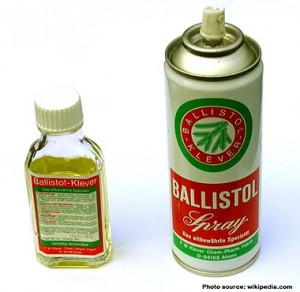 Play safe, will you? Keep in mind that the best protection for your cold weapons is provided by that layer of oil. Using a high quality brand of oil is advisable.
Play safe, will you? Keep in mind that the best protection for your cold weapons is provided by that layer of oil. Using a high quality brand of oil is advisable.
I personally use Ballistol, but there are lots of companies with good products in the field. A good oil maintains its lubricating properties for an extended period of time.
If your cold weapons have leather/wooden grips and scabbards, you should take care of those too, by covering them with a thin layer of leather wax, so they’ll be protected when exposed to moist environments/open air for extended periods of time.
Polishing
Polishing is another item on your to-do list if you care about your cold weapons. For polishing, you can use thin varieties of sand paper or steel wool. With a little bit of perseverance and skill, you can easily remove those rusty spots in no time.
If you notice slight oxidation marks on your cold weapons, you can use a soft cloth or a scouring sponge to remove them but be aware that bronze and brass parts are very sensitive and they’ll get scratched when using even the finest sandpaper.
You must be extra careful when choosing the right sandpaper for polishing. If the granulation is too coarse, you will do more harm than good to your cold weapon. When you need to polish brass parts, the best thing to do is to use a rust killer.
One of the best substances to use when polishing both steel and brass is toothpaste. Yeah, you got that right: toothpaste contains hydrated silica, which is very fine textured and abrasive and works like a charm, even for polishing jewelry and silverware. All you have to do is to smear the weapon that needs polishing with toothpaste, let it dry for a while, and rub it off again with a soft cloth and water. In this way, you will avoid scratches and unevenness and the end result will be awesome!
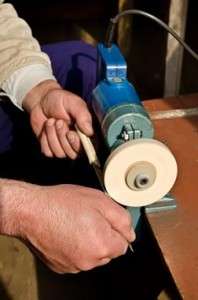 Iron files and whetstone can be used for removing burrs and unevenness that are visible on your cold weapons due to heavy usage and/or improper storage conditions. Just like with sandpaper, you must make sure that both the whetstone and iron files are finely textured, so they won’t leave marks/traces on the metal.
Iron files and whetstone can be used for removing burrs and unevenness that are visible on your cold weapons due to heavy usage and/or improper storage conditions. Just like with sandpaper, you must make sure that both the whetstone and iron files are finely textured, so they won’t leave marks/traces on the metal.
This method has been used for centuries and it’s still the best way to remove burrs from your cold weapons. All it takes is patience and some skill that you will acquire with time and practice. Don’t worry, it is perfectly normal for all heavy-duty tools to develop burrs and unevenness, but it’s best to remove them as soon as possible.
Please keep in mind that someday you may need to count on your cold weapons for your survival. You must be sure that they will serve you flawlessly in such a situation and if you take your weapons maintenance seriously, they’ll be there for you.
That about sums it up. Cut and dried: keep’em sharp, dry, clean and mean!
Always remember: guns for show, knives for a pro! (just kidding folks!)
This article has been written by Chris Black for Survivopedia.
Photo source: 123RF.com


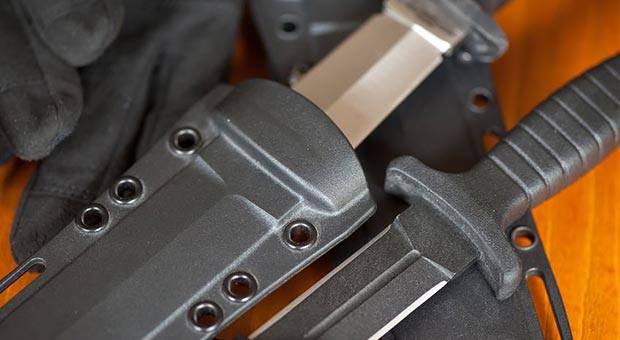


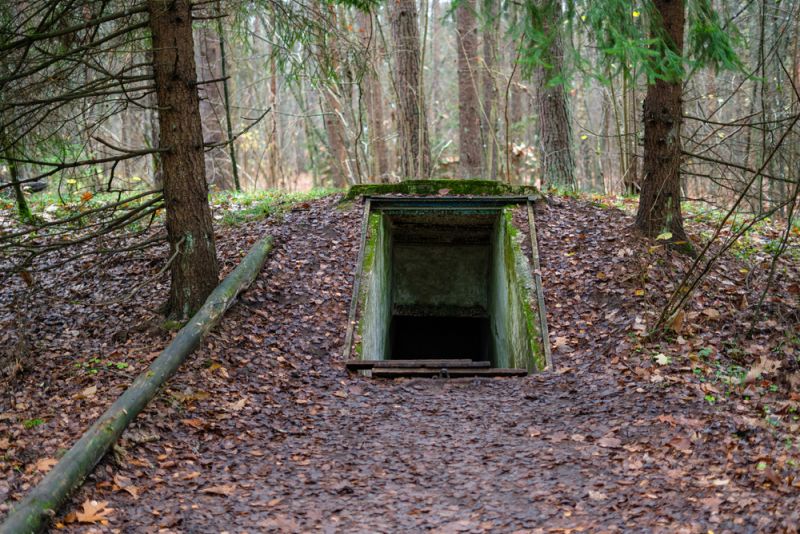
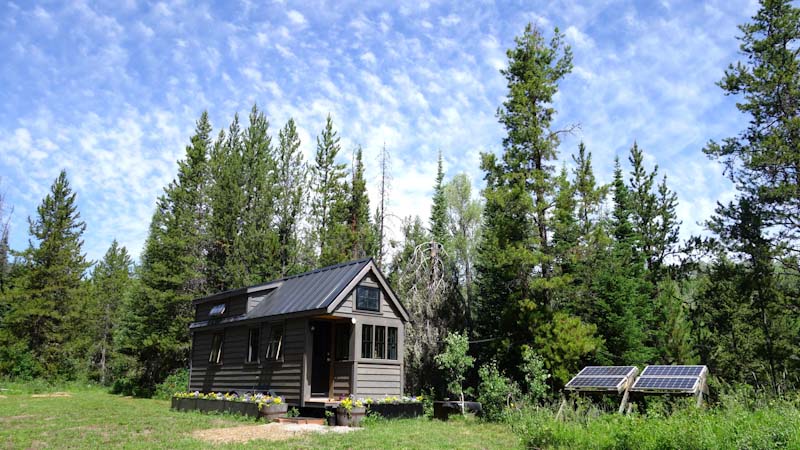

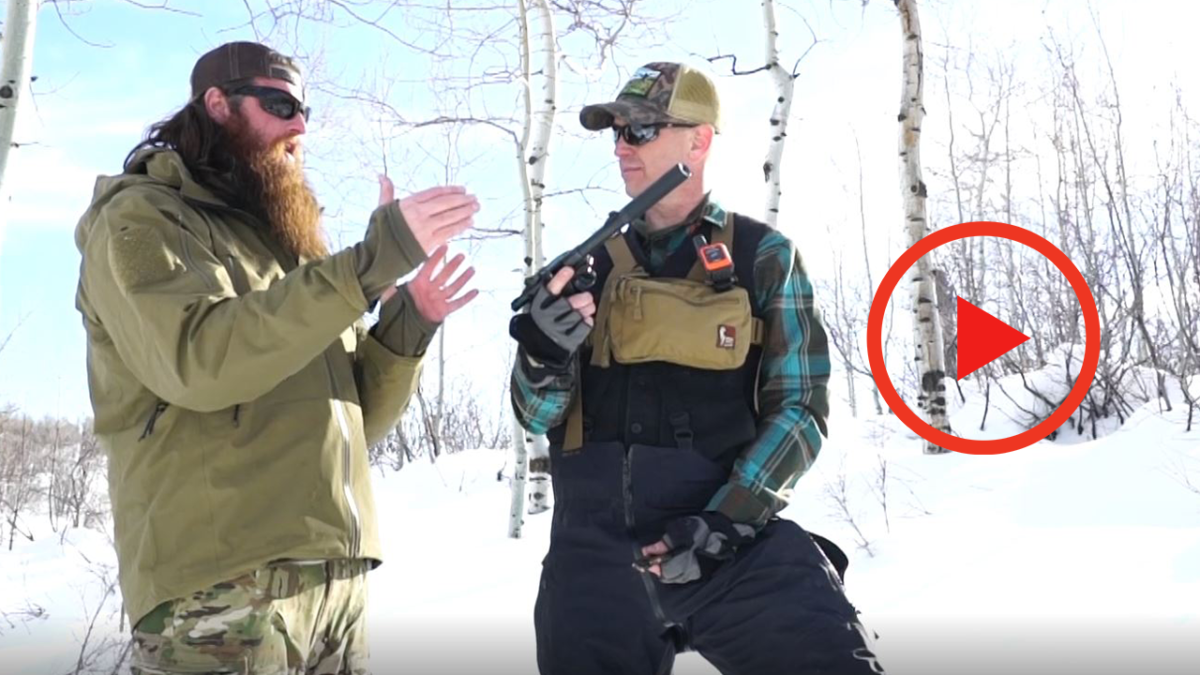

Chris | March 23, 2014
|
My personal strategy for keeping a knife maintained is to carry a cotton cloth in a ziploc bag. The cloth is lightly sprayed with mineral oil. At regular intervals, take the cloth and give the blade a rub. The ziploc bag will keep the cloth from getting a mess all over your other items in a pack, as well as preserve the oil for a long time. This is what I’d call an expedient tactic, rather than a dedicated one.
In the event of SHTF, I would also pack some emery paper, a file, and a stone or two for keeping the edge of a knife or axe in good functional shape. You don’t need to be a walking sharpening service, but you do need some tools to keep an edge sharp.
Noel Victor Comley | March 24, 2014
|
Your remarks about toothpaste are spot on ( remember if you fly you may need to stow the tube in your stowed luggage ) and another good product for weapon maintenance is shoe polish: good for both the metal, the leather and the wood parts. I prefer Kiwi brand.
silas longshot | March 24, 2014
|
Many of us survivalist types have made their own knives from scratch. Some find that using the same bluing method one uses to protect gun metal works nicely with a raw steel blade surface. Just get it super smooth with 1000-2000 grit sandpaper or buffing and apply the chemistry of do it yourself bluing products. Works nice.
Pingback:How to Keep Your Knives at the Ready | TheSurvivalPlaceBlog | March 25, 2014
|
Elizabeth | April 2, 2014
|
An E-tool is a good piece of gear, even if it feels like dead weight (kill pit for large game for long term sciarneos, creating a below ground fire pit, or digging a fighting position if necessary). If you need that much ammo and a tech-9 you’re building a pack for a different scenario and should have more magazines (you don’t need that much for a bug out survival situation). If you’re bugging out, who are you going to give the other walkie-talkie to? Too many MREs, pack snares instead.
Kukriking | March 28, 2014
|
The products I’ve been using for years are: Marine Tuf Cloth & Tuf Glide to keep steel rust free and pivots clean & smooth…(dries quick and isn’t messy at all.) And I use a 6″ DMT diamond stone…the continuous surface type seems to work best (as opposed to the dotted diamond type) for the initial sharpening, then I finish up with a ceramic rod or flat ceramic. And I use a Dogbone diamond rod for serrations. I tried all kinds of other products and methods (Arkansas stones, Lansky angle guide systems, Smith, Worksharp [excellent system but requires electricity], etc.), but I always come back to these. If I always have a TufGlide/Cloth AND a DMT diamond stone, I’ll always be happy… and so will my 300 blades. 300…I love that number.
ΜΟΛΩΝ ΛΑΒΕ !! (GET SOME !)
Mason Collins | July 17, 2015
|
At least it’s more instructive than one of the reality Television stars, kim who?
Joey what?
Pingback:Survival Knife Misuse: How To Wear And Tear Your Knives | Prepper's Survival Homestead | October 29, 2015
|
Pingback:Survival Knife Misuse: How To Wear And Tear Your Knives - Survival By Preparedness | October 29, 2015
|
Pingback:Survival Knife Misuse: How To Wear And Tear Your Knives – The Prepper Dome | December 13, 2015
|
Pingback:Survival Knife Misuse: How To Wear And Tear Your Knives | Survivopedia | June 21, 2016
|
Vernon R Hagan Jr. | December 26, 2016
|
Great stories.. This guy has it right on the money for years I have personally carried a knife for use and personal safety.. In the situations Chris has described can happen even in normal day life. A cold weapon is always a great idea to keep around, been a Boy scout for 25 years I know a lot about survival in the woods and City grid.